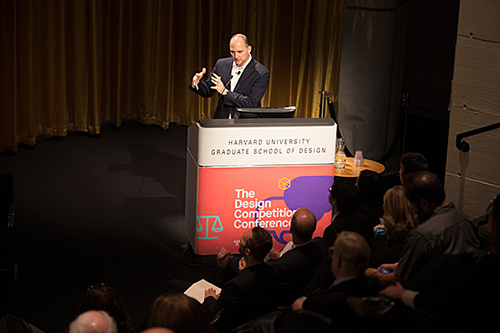Redesigning Design Contests
By Corydon Ireland, Harvard Gazette

Photo: Rose Lincoln/Harvard Staff Photographer
At a recent Gund Hall event, Harvard urban planner Jerold S. Kayden called design competitions “chicken soup” — just the right cure, in the minds of those who praise them, for addressing today’s increasingly complicated challenges of the built environment.
Such contests, typically open to anyone with an architecture degree, often unleash creative energies and become “instigations of significant thought,” said Kayden, the Frank Backus Williams Professor of Urban Planning and Design at the Harvard Graduate School of Design (GSD). They also provide a forum for young practitioners whose voices might otherwise go unheard in the noise of the marketplace.
That contest forum can be a springboard too. Maya Lin, for instance, was an unknown, 21-year-old undergraduate when her 1981 design for the Vietnam Veterans Memorial bested more than 1,400 competitors.
But Kayden — who for two years has been teaching a course on design competitions, the first of its kind in the academy ― and other experts at the Design Competition Conference last Thursday and Friday in Piper Auditorium quickly acknowledged the dark side of “the quite complex issue of design competitions,” as Kayden put it. They said that the arena of competitions needs a rulebook, and that designs — winning or not — should be archived. They also said that two main frustrations have to be confronted: winning designs are often never built, and compensation is scant or absent.
Read the entire article on Harvard Gazette.
